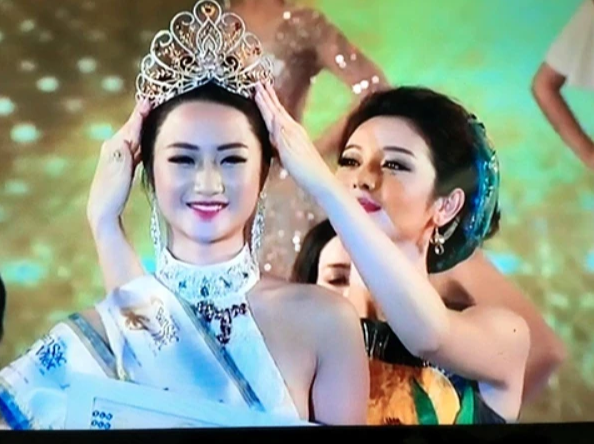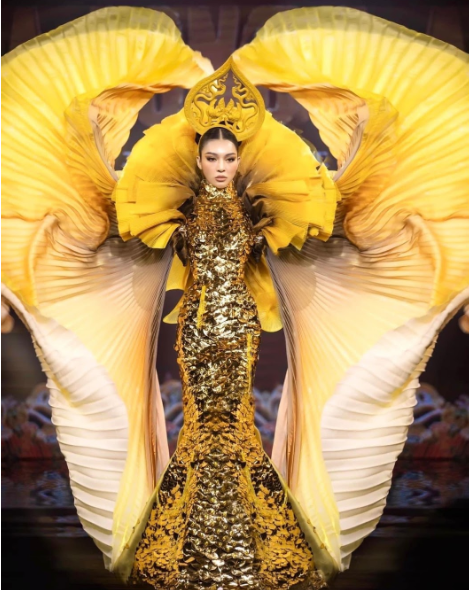Introduction to the concept of taboos in art
Unleashing creativity and pushing boundaries have always been ingrained in the world of art Chris Rock. From provocative paintings to controversial sculptures, artists have continuously challenged societal norms and sparked intense debates. And it is within this realm of taboo art that we find ourselves exploring the significance of Chris Rock’s nude portrayal. Brace yourself as we dive deep into the captivating yet contentious world where art meets taboos, igniting discussions that leave no stone unturned! Let’s navigate through these uncharted waters together, shedding light on the underlying meanings and unraveling the complexities behind this thought-provoking masterpiece. So buckle up, open your mind wide, and embark on a journey where limitations are shattered and conventions are defied!
The controversy surrounding Chris Rock’s nude portrayal
The controversy surrounding Chris Rock’s nude portrayal has ignited heated debates within the art community and beyond. Some argue that his bold choice to expose himself in this way is a powerful statement challenging societal norms and expectations. They view it as an act of defiance against rigid ideas of masculinity, race, and body image.
On the other hand, critics argue that Rock’s nudity is nothing more than a desperate attempt to shock and garner attention. They dismiss it as mere shock value with no real artistic merit or deeper meaning behind it.
However, it is important to approach this topic with an open mind and critical thinking. Art has always been a platform for pushing boundaries and provoking discussion. By exploring taboos, artists can challenge our preconceived notions and prompt us to question societal norms.
Rock’s nude portrayal specifically challenges conventional ideas of race by presenting himself in a vulnerable state without any cultural markers or stereotypes attached. It forces us to confront our own biases and assumptions about black masculinity.
In navigating taboos in art like this one, we must remember that not everyone will agree on its significance or value. What matters most is fostering respectful dialogue where differing perspectives can be heard.
By engaging in these discussions, we can gain a deeper understanding of ourselves and others while expanding our perception of what art can be. Let us navigate these taboos with curiosity rather than judgment, embracing the opportunity for growth that they present.
Arguments for and against the significance of the artwork
When it comes to discussing the significance of Chris Rock’s nude portrayal in art, there is bound to be a range of arguments both for and against its importance. Some may argue that the artwork is simply provocative for the sake of being controversial, using shock value as a cheap tactic to garner attention. Others might contend that this piece challenges societal norms surrounding race and masculinity, forcing viewers to confront their own biases and assumptions.
One argument in favor of the artwork’s significance is its ability to challenge conventional ideas about race. By portraying a prominent Black figure like Chris Rock in a vulnerable state, stripped down both literally and metaphorically, the artist forces us to question our preconceived notions about Black masculinity. This image pushes back against stereotypes by presenting an alternative narrative that embraces vulnerability and self-expression.
On the other hand, some critics may argue that this artwork does not offer anything substantial or thought-provoking beyond mere shock value. They might claim that nudity has been used countless times throughout art history without necessarily carrying any deep meaning or message. In their eyes, this piece could be seen as nothing more than an attempt at grabbing attention through controversy.
However, it is important to approach these discussions with open-mindedness and critical thinking rather than dismissing them outright. Art has always had the power to provoke dialogue and challenge societal norms. It can push boundaries and make us uncomfortable to create space for growth and understanding.
In navigating taboos within art debates such as this one surrounding Chris Rock’s nude portrayal, it is essential not only to consider personal opinions but also broader cultural perspectives. What may seem insignificant or trivial from one standpoint could hold immense importance from another viewpoint.
Whether you view this artwork as significant or not will depend on your interpretation and values. However, what remains undeniable is its ability to spark conversation around topics often considered taboo – race, masculinity, and artistic expression itself – inviting us all into deeper exploration and understanding.
Examining societal norms and expectations placed on artists
Artists have long been challenged by societal norms and expectations that dictate what is acceptable or taboo in their work. These constraints can stifle creativity and limit the potential for thought-provoking art that pushes boundaries. Chris Rock’s nude portrayal serves as a prime example of how artists face scrutiny when they challenge these conventions.
In society, there are often unspoken rules about what subjects an artist should explore and how they should approach them. Many argue that art should be aesthetically pleasing or serve a purely decorative purpose, rather than delving into uncomfortable or controversial topics. However, it is precisely through challenging these norms that artists can spark important conversations and challenge our preconceived notions.
The depiction of Chris Rock in the nude challenges conventional ideas of race and masculinity, inviting us to question deeply ingrained stereotypes. By presenting himself vulnerably, Rock confronts the viewer with their own biases and forces them to reconsider their perceptions.
Societal expectations also place pressure on artists to conform to established standards to gain recognition or financial success. This can lead many artists to self-censor or create work that aligns with popular tastes rather than expressing their true artistic vision.
It is crucial for us as consumers of art to recognize these societal pressures on artists and encourage them to explore new territories without fear of backlash or condemnation. Open-mindedness and critical thinking are essential tools in navigating discussions around taboo art, allowing us to appreciate its significance even if we may not personally resonate with it.
By questioning societal norms placed upon artists, we open up avenues for genuine expression and exploration within the creative realm. Art has the power not only to entertain but also to provoke thoughtful dialogue about important social issues.
In conclusion…
Navigating taboos in art requires careful consideration of societal norms while encouraging freedom of artistic expression. Chris Rock’s nude portrayal challenges both racial stereotypes and gender expectations, pushing us to confront our own biases. As consumers of art, it is
How this artwork challenges conventional ideas of race and masculinity
Art has always been a powerful tool for challenging societal norms and pushing boundaries, and Chris Roc’s nude portrayal is no exception. In this thought-provoking artwork, Rock challenges conventional ideas of race and masculinity in a way that demands attention and sparks important discussions.
Traditionally, society has placed certain expectations on how men should present themselves based on their race. The depiction of the male body as strong, dominant, and devoid of vulnerability has perpetuated harmful stereotypes. However, Rock’s artwork disrupts these notions by portraying himself in his most vulnerable state – completely naked.
By presenting himself without any barriers or armor, Rock forces us to confront our preconceived notions about race and masculinity. He invites us to question why we assign specific traits or attributes to different racial groups or genders. This portrayal challenges the idea that there is only one acceptable way for men of color to exist in the world.
Furthermore, Rock’s artwork also challenges traditional ideals of beauty within the art world. By depicting himself naked, he defies societal expectations around modesty and perfectionism. He reminds us that all bodies are worthy of representation and celebration – regardless of their conformity to narrow standards set by society.
In exploring these themes through his artistry, Chris Rock encourages viewers to critically examine their own biases and assumptions about race and masculinity. It prompts conversations about identity politics, societal pressures, and ingrained prejudices that can often go unaddressed.
Art like this pushes us out of our comfort zones; it asks difficult questions; it confronts our deeply-held beliefs; but ultimately it opens up space for growth and understanding.
In engaging with taboo subjects such as race, nudity, and masculinity, Rock’s work encourages a more nuanced conversation where multiple perspectives can be explored, rather than simplifying complex issues into black-and-white binaries.
Artistic expression like this allows us to challenge long-standing conventions, explore new possibilities, and ultimately, redefine what it means to be human.
Chris Rock’s nude portrayal challenges conventional ideas of race and masculinity
The importance of open-mindedness and critical thinking in discussions about taboo art
When it comes to discussing taboo art, open-mindedness, and critical thinking are essential. Art has the power to challenge societal norms and push boundaries, evoking strong emotions and sparking important conversations. However, these discussions can often be met with resistance or discomfort due to the controversial nature of the subject matter.
To truly appreciate and understand taboo art, we must approach it with an open mind. This means setting aside preconceived notions or judgments that may hinder our ability to engage in a thoughtful dialogue. It requires us to step outside our comfort zones and explore perspectives that may differ from our own.
Critical thinking is equally crucial in navigating these discussions. It allows us to analyze the artwork objectively, considering both its artistic merit and its potential impact on society. By critically examining taboo art, we can delve deeper into its underlying themes, symbolism, and messages.
Engaging in discussions about this type of art requires empathy as well. We must recognize that different individuals might have varied interpretations or reactions based on their personal experiences or cultural backgrounds. Embracing diverse viewpoints enriches the conversation and broadens our understanding of complex topics.
It’s important not to dismiss or shy away from conversations about taboo art simply because they make us uncomfortable. Instead, let’s embrace them as opportunities for growth – intellectually, emotionally, and artistically.
By fostering open-mindedness and critical thinking in discussions surrounding taboo art, we create space for thought-provoking dialogues that challenge conventional ideas about what is acceptable or appropriate in society’s eyes. Through these conversations emerge new insights into race,
Conclusion: the power of art to provoke discussion and challenge societal norms
Art has always been a powerful tool for challenging societal norms and sparking meaningful discussions. Chris Rock’s nude portrayal is just one example of how art can push boundaries and invite us to question our preconceived notions about race, masculinity, and taboo subjects.
By depicting himself in such a vulnerable state, Rock challenges conventional ideas of what it means to be male, Black, and confident. He confronts the long-held stereotypes that have plagued African-American men for years, forcing viewers to reassess their own biases and assumptions.
While some may argue that this artwork is merely shocking or attention-seeking, it cannot be denied that it provokes conversation. It forces us to examine our discomfort with nudity and exposes the deep-rooted taboos ingrained within society. By engaging in dialogue about these uncomfortable topics, we can grow as individuals and as a community.
Navigating taboos in art requires open-mindedness and critical thinking. It demands that we set aside our initial reactions or judgments and approach the work with curiosity instead. We must challenge ourselves to dig deeper beneath the surface-level interpretation of an artwork to truly appreciate its significance.
In conclusion (without explicitly stating so), Chris Rock’s nude portrayal serves as a reminder of the power of art – its ability to provoke discussion, challenge societal norms, and encourage self-reflection. As viewers engage with controversial artworks like this one, they are allowed not only to broaden their perspectives but also contribute towards dismantling outdated taboos.
Let us embrace these growth opportunities rather than shy away from them out of fear or discomfort. Through thoughtful engagement with taboo art pieces like Chris Rock’s nude portrayal, we can continue pushing boundaries together – creating a world where creativity thrives uninhibited by social constraints.










